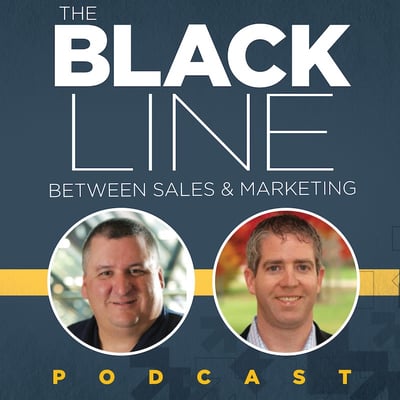HubSpot hosted Inbound 2020 remotely this year and they knocked it out of the park with the short time they had to put it together. From Inbound stems our question of the week about aligning sales and marketing. In this episode of The Black Line Podcast, Mike and Doug share their takeaways and improvements to the virtual event and give their advice on what to do about aligning your sales and marketing teams.

Audio:
Show Notes

Feature 1: BIG NEWS
Inbound 2020 was hosted remotely this year, and it was the first virtual conference where Doug could really see and embrace the virtual-ness of it. For those of you who don't know, HubSpot didn't build the conference on someone else's platform, they built it entirely from scratch.
Mike's take on the conference was that it was very impressive for the little time that HubSpot had to put it together. The one part he didn't like was that it was fully remote, although that couldn't be controlled in this environment. He enjoyed that it was asynchronous, and he really enjoyed the spotlight with Dharmesh Shah, Brian Halligan, and Christopher O'Donnell. And to top it off, the Inbound vs. Outbound debate with Doug and George B Thomas was hilarious, informative, and at the end, ended in a dead tie. (Although to those listening or watching, Outbound won by one vote at the very end when Doug upvoted himself!)
Doug also enjoyed his time at Inbound and thinks the product is "just on fire." So much, in fact, hat he would love to know why any mid-market companies didn't go with HubSpot. The biggest thing he missed this year was Brian Halligan and Dharmesh Shah's keynotes because they've always been inspirational and something that the company talks about for years afterwards.
The biggest issue Doug found with the conference was that there wasn't a lot of chance to socialize or even strike up a conversation with sponsors/people at the booths. What's the solve for that? Even though having social interaction virtually will never be the same as having it in person, there at least has to be more that can be done to try to improve the interaction. Doug proposes to have some type of match.com algorithm when it comes to group meetups. (If anyone actually does this, Doug's expecting to receive rewards.)
Feature 2: Question of the Episode
Question: I'm a marketer and attended Inbound last week. A lot of the conversation focused on creating better alignment between marketing and sales. I hear this a lot. I think my company does a pretty good job as we all get along, but I also know that we should be doing much better. Here's my question: I hear a lot of talk about alignment, but not much about what really needs to be done - what should we be doing to create better marketing and sales alignment?
This is a question that comes up so much, and Mike starts off with some advice - put marketers on your sales calls (post-sale). Let them listen in and ask questions. You need to integrate your teams 100% because the once a week sales and marketing alignment meeting isn't going to cut it.
Doug disagrees. He doesn't think that does anything. We've been talking about this issue for decades and don't seem to be making progress. What if they aren't supposed to be aligned?
Alignment is the byproduct, not the objective. The misalignment is where the beauty and opportunity is. Marketing speaks one language and sales speaks another. If you expose two different people to the same viewpoint, they'll apply it in very different ways. Marketing is looking up and out, sales is looking down and in. Marketing is the professional golfer on the driving range, sales is the professional golfer on the course. When you're on the course, your goal is to get the ball in the hole in as few strokes as possible. When you're on the range, the goal is to get the right swing.
To bring everything together, you need a framework. We (Imagine) realized this about a year ago and created The DEALS Framework. (If you would like more information, you can access the framework here.) The difficulty is that marketing says they heard about Segment Y, so they start creating content for Segment Y. Then you look at the target accounts that sales reps are working and you find that very little time is spent on Segment Y. There's something wrong there. If you haven't identified where the sales team is spending their time, you're not going to change or transform. If you can tell marketing what percentage of time is going into the different segments, they will now know who to go after. If everyone understands the framework you're using, anyone and everyone can now work together without issues.
Takeaways/Predictions:
Mike: HubSpot is going to grow like crazy over the next few months.
Doug: There's going to be a double dip in the next 9 months. We haven't felt the ricochet yet. There are good opportunities for growth, and now is the time to go in and tighten your positioning and value proposition. 2021 is going to be far more similar to 2009 than 2020. 2021 is going to be hard because it isn't going to be as crazy. Now is the time to get focused and clear.

 Doug Davidoff
Doug Davidoff